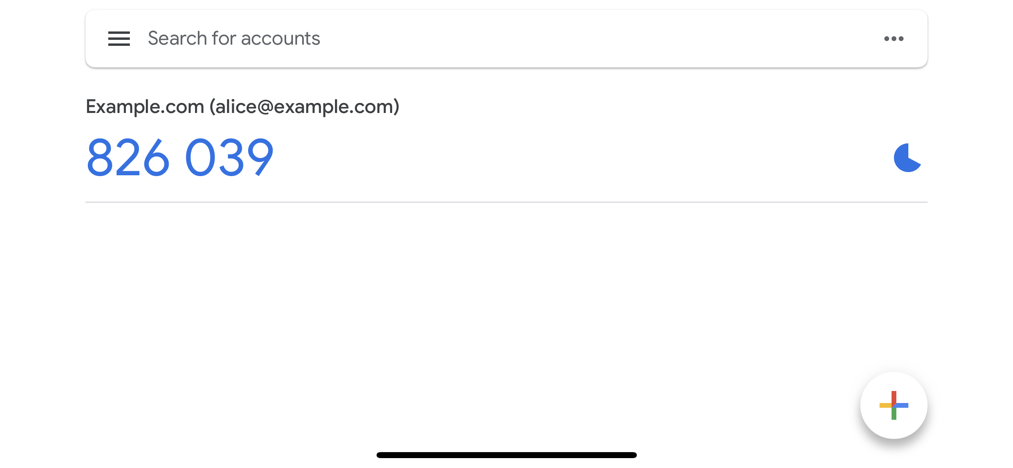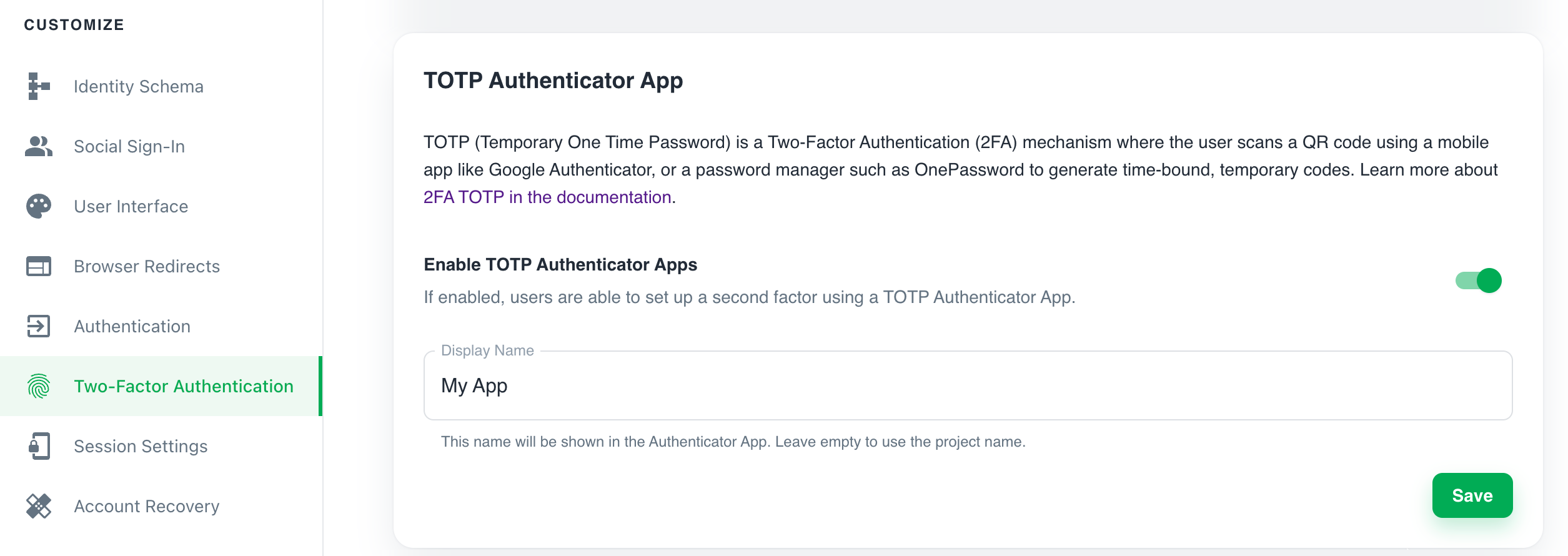TOTP (Google Authenticator)
You can enable Time-Based One-Time Password (TOTP) authentication in the Ory Identity Service (Kratos) to allow users to perform 2FA with TOTP apps such as Google Authenticator, LastPass, or FreeOTP.
When enabled, users can pair a TOTP app with their account:
The example screenshot is captured using the Ory Managed UI.

When attempting to perform actions secured with 2FA, users get a TOTP code with the application identifier:

In this example, the user identifier (email - alice@example.com) is used. To learn how to enable this behavior, read
this section.
Configuration
Follow these steps to enable Time-Based One-Time Password (TOTP) as the second authentication factor:
Ory Cloud Console
- Sign in to the Ory Cloud Console and go to Two-Factor Authentication.
- In the TOTP Authenticator App section, use the switch to enable TOTP.
- Define the name of the requesting party in the Display Name. The users sees this name in the TOTP application when getting a one-time password.
- Click Save to finish.

Ory CLI
Get the Identity Service configuration from your project and save it to a file:
## List all available projects
ory list projects
## Get config
ory get identity-config <project-id> --format yaml > identity-config.yamlFind
totpinselfservice/methods, setenabledtotrue, and define theissuer:identity-config.yamlselfservice:
methods:
totp:
config:
# The "issuer" is the name in the TOTP application users see when getting a one-time password.
issuer: ExampleIssuer.com
enabled: trueUpdate the Ory Cloud Identity Service configuration using the file you worked with:
ory update identity-config <project-id> --file identity-config.yaml
Self-hosted instances
When working with self-hosted instances of the Ory Identity Service (Kratos), add the totp method to selfservice/methods in
the configuration file:
selfservice:
methods:
totp:
config:
# The "issuer" is the name in the TOTP application users see when getting a one-time password.
issuer: ExampleIssuerForSelfHosted.com
enabled: true
Distinguishing Identities requesting TOTP
To help users distinguish which identity requests for the TOTP code, add a totp object to the trait which represents the TOTP
account name.
In this example, the user's email address is the identifier:
This configuration is the default for all Ory Cloud projects.
{
"$schema": "http://json-schema.org/draft-07/schema#",
"type": "object",
"properties": {
"traits": {
"type": "object",
"properties": {
"email": {
"type": "string",
"format": "email",
"title": "Your E-Mail",
"minLength": 3,
"ory.sh/kratos": {
"credentials": {
// ...
"totp": {
"account_name": true
}
}
// ...
}
}
// ...
}
// ...
}
}
}
Writing E2E tests
When writing end-to-end (E2E) tests for TOTP implementation in your app, you can reference the Cypress tests used in Ory Identity Service (Kratos).
Identity credentials
When the user enables TOTP, Ory adds the following entries to the credentials object of the associated Identity:
credentials:
password:
id: totp
identifiers:
- 802471b9-06f5-49d4-a88d-5e7d6bcfed22
config:
# This is the TOTP URL which contains the pre-shared key and some additional meta-information.
totp_url: otpauth://totp/Example:alice@example.org?secret=JBSWY3DPEHPK3PXP&issuer=Example